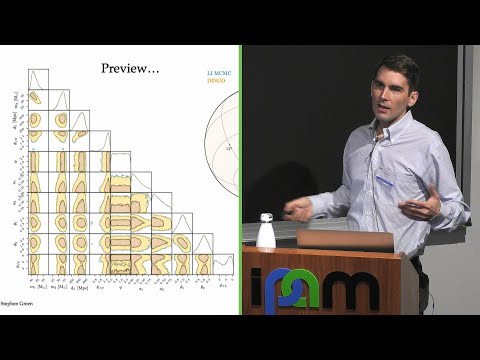Description:
Explore real-time gravitational-wave parameter estimation using machine learning in this conference talk by Stephen Green from the Max Planck Institute for Gravitational Physics. Delve into the challenges of traditional Bayesian inference methods and discover a powerful alternative using simulation-based inference combined with neural density estimators. Learn about the use of normalizing flows to build posterior surrogates, enabling fast and accurate inference for binary black holes. Examine the advantages of this approach, including its ability to account for detector nonstationarity and produce results comparable to MCMC in seconds. Gain insights into future prospects, including extensions to binary neutron stars and realistic noise modeling. Follow the presentation's structure, covering topics such as parameter estimation, sampling challenges, simulation-based inference, normalizing flows, and group equivariant neural posterior estimation. Understand the importance of method validation, amortized inference, and quantitative comparisons with standard samplers.
Read more

Real-Time Gravitational-Wave Parameter Estimation Using Machine Learning
Add to list
#Computer Science
#Machine Learning
#Mathematics
#Statistics & Probability
#Sampling
#Parameter Estimation